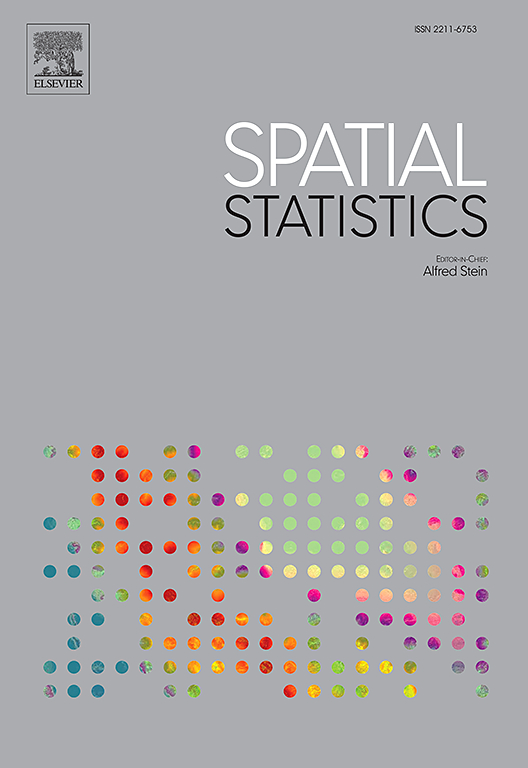Softening the criteria for determining inner and outer predicted exceedance sets
IF 2.5
2区 数学
Q3 GEOSCIENCES, MULTIDISCIPLINARY
引用次数: 0
Abstract
Determining exceedance regions, such as regions where a specified threshold of a pollutant in the environment is exceeded, is of critical importance for decision-making in environmental management and public health. Inner and outer predicted exceedance sets express the uncertainties in predicted exceedance regions as they sandwich the unknown true exceedance region with high confidence, analogous to confidence regions for point estimates. It is therefore desirable to reduce the uncertainty about the locations of the true exceedance region, resulting in a narrow band between the inner and outer sets. However, in practice this is not often the case mainly due to the strict statistical subset criteria being set, which are equivalent to a multiple testing problem controlling the familywise error rate (FWER). It is well known that the FWER leads to fewer rejections compared to other criteria; in the context of exceedance regions, this would correspond to an extremely small, conservative inner predicted exceedance region. In this paper, we loosen the criteria slightly to obtain a narrower band between inner and outer sets, allowing for more nuanced uncertainty assessments. A new algorithm is proposed to construct these exceedance sets, and the methods are compared in a simulation study to assess whether they indeed control the new criteria. The methods are illustrated on two data sets: average rainfall in the state of Paraná, Brazil, and nitrogen dioxide air pollution in Germany in the year 2018.
软化确定内部和外部预测超出集的标准
确定超标区域,例如环境中污染物超过规定阈值的区域,对环境管理和公共卫生决策至关重要。内部和外部预测超越集表示预测超越区域的不确定性,因为它们以高置信度夹在未知的真实超越区域中,类似于点估计的置信度区域。因此,需要减少真实超出区域位置的不确定性,从而使内外集之间的频带变窄。然而,在实践中,这种情况并不常见,主要是由于设置了严格的统计子集标准,这相当于控制家庭错误率(FWER)的多个测试问题。众所周知,与其他标准相比,FWER会导致更少的拒绝;在超出区域的情况下,这将对应于一个极小的、保守的内部预测超出区域。在本文中,我们稍微放宽了标准,以在内外集之间获得更窄的频带,从而允许更细微的不确定性评估。提出了一种新的算法来构造这些超越集,并在仿真研究中比较了各种方法,以评估它们是否确实控制了新的准则。这些方法在两个数据集上得到了说明:巴西帕拉纳州的平均降雨量和德国2018年的二氧化氮空气污染。
本文章由计算机程序翻译,如有差异,请以英文原文为准。
求助全文
约1分钟内获得全文
求助全文
来源期刊

Spatial Statistics
GEOSCIENCES, MULTIDISCIPLINARY-MATHEMATICS, INTERDISCIPLINARY APPLICATIONS
CiteScore
4.00
自引率
21.70%
发文量
89
审稿时长
55 days
期刊介绍:
Spatial Statistics publishes articles on the theory and application of spatial and spatio-temporal statistics. It favours manuscripts that present theory generated by new applications, or in which new theory is applied to an important practical case. A purely theoretical study will only rarely be accepted. Pure case studies without methodological development are not acceptable for publication.
Spatial statistics concerns the quantitative analysis of spatial and spatio-temporal data, including their statistical dependencies, accuracy and uncertainties. Methodology for spatial statistics is typically found in probability theory, stochastic modelling and mathematical statistics as well as in information science. Spatial statistics is used in mapping, assessing spatial data quality, sampling design optimisation, modelling of dependence structures, and drawing of valid inference from a limited set of spatio-temporal data.
 求助内容:
求助内容: 应助结果提醒方式:
应助结果提醒方式:


